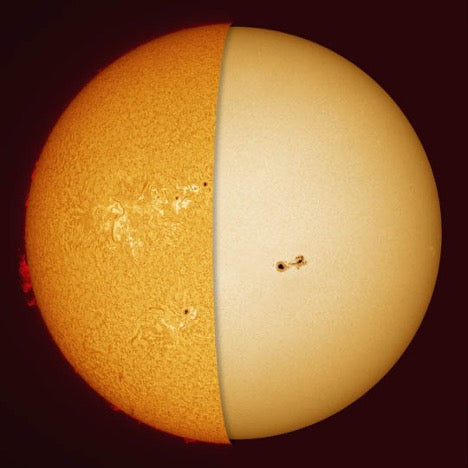Antlia Solar Discover Dualband Energy Rejection Filter


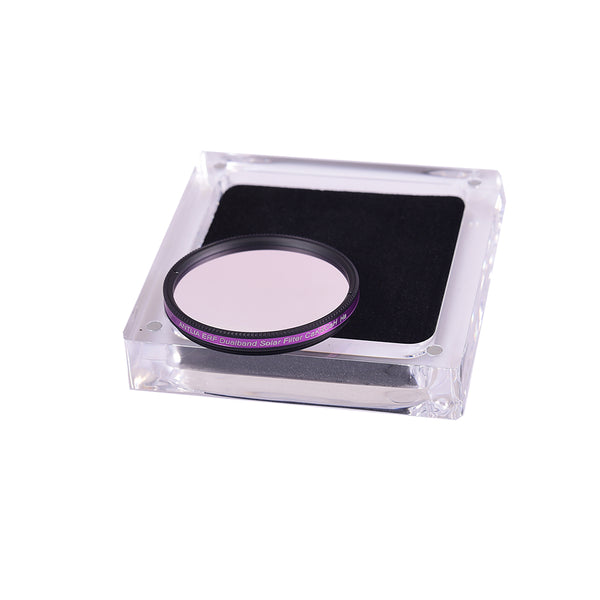







Antlia Solar Discover Dualband Energy Rejection Filter
Size - 130mm | ERF-130MM
Why Purchase from All-Star Telescope?
Free Expert Support
Whether you are a first timer needing help with setting up or an enthusiast that can't quite make that one thing work, our expert staff are ready to support your needs. With decades of knowledge and first hand experience we've been there and we can help you through it!
Stress Free, Secure Transactions
You can trust purchasing and delivery with All-Star Telescope. All of our transactions are 100% secure and Level 1 PCI DSS compliant thanks to Shopify's ShopPay platform. For additional protection, we insure 100% of the value of every shipment we make. If it get's lost during shipment, we replace it. If it gets damaged during shipment, we replace it. We make sure your product arrives exactly as you would expect it to; we promise.
We also ensure privacy protection. We never keep any of your credit card information on file and any of your personal data is stored according to our policies.
30 Day Return Policy
Buy with confidence knowing that we accept returns up to 30 days after purchase. We want you to have something you will actually use and we are confident that we keep good quality products in our store with No Junk.
Price Match Promise
Shipping around for the best price is tough, we make it easier by offering the best pricing in the market. But if you find a better price on an in-store item somewhere else we will match it!
Recommended Accessories
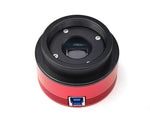
ZWO ASI174MM USB3.0 Monochrome Camera (ASI...
This little camera is fantastic for guiding and maybe even better for solar imaging. We use one here in the shop on our solar rig.

ZWO ASI174MM USB3.0 Monochrome Camera (ASI174MM)
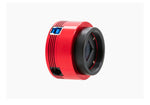
ZWO ASI585MC Planetary Colour Camera (ASI5...
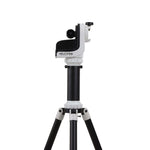
Sky-Watcher SolarQuest Mount (S21170)
These are fantastic mounts. They use built in GPS and a camera to have your telescope find and follow the sun. All you have to do is turn it on. We...

Sky-Watcher SolarQuest Mount (S21170)
Product Description
The Antlia Dualband Solar Energy Rejection Filter is designed by combining Hydrogen Alpha, Calcium K-Line and Calcium H-Line in one dualband filter. It is the filter used in conjunction with Antlia Solar Discover 3nm CaK, Solar, 5Å CaK or similar product to protect your solar imaging equipments from high temperature and bandpass shifting by rejecting massive heat before it enters telescope when imaging and observing solar.
They are very effective at blocking UV and IR light, and allow the desired wavelengths Ha 656.3nm, CaK 393.3nm and CaH 396.8nm to pass through.
Product Features:
- FWHM 25nm with CWL at H-alpha wavelength of 656.3nm; Transmission: T>95%
- FHWM 25nm with CWL at CaK wavelength 393.3nm covering Calcium K-Line 393.3nm and Calcium K-Line 396.8nm; Transmission: T>90%
- Coating Range: 200-1700nm wavelengths
- Finished with the most advanced multicoatings
- Coated on heat resistant double-polished substrate
- Antlia ERF 130mm, 150mm,200mm filters are mounted in a housing/cell to hold it in front of the telescope
- Antlia ERF 2’’ mounted filter is installed on the back end of the refractor telescope
- Transmitted Wavefront: Lambda/4 or better.
Important Notes:
- The Antlia Dual ERF filters cannot be used on its own. It must be used together with the professionally made solar imaging equipments, which have their own complete blocking filters assembled. Such as Antlia Solar Discover 5Å CaK, Solar Discover 3nm CaK Assembly, Dualband Ha, CaK and CaH filter Assembly;
- Please do not use the Antlia Dualband ERF filter by itself for visual observation;
- 2’’ ERF filter must working on 110mm or smaller refractors.
Warranty: 3-Years
Specifications
|
Antlia Dual ERF Filter |
H-alpha |
CaK & CaH |
|
FWHM |
25nm |
25nm |
|
CWL (Central Wavelength) |
Ha 656.3nm |
CaK 393nm covering CaK 393.3nm & CaH 396.8nm |
|
Peak Transmission |
90% |
90% |
|
Coating Range |
200-1700nm |
|
|
Filter Thickness |
10mm+/-0.05mm |
|
|
Size |
ERF glass 130mm with cell, for 130-190mm Fixed diameter ERF glass 150mm with cell, for 150-220mm Fixed diameter ERF glass 200mm with cell, for 200-250mm Fixed diameter |
|
Spectrum Curve




